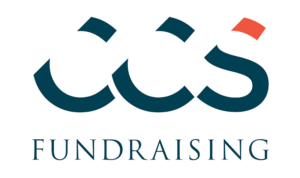With the recent release of Giving USA’s data on philanthropy in the United States, we see encouraging signs for the future of generosity in our country. This is particularly the case within the health sector.
After a record-breaking year of giving in 2020, total giving in the US in 2021 remained strong at $484.85 billion, averaging to $1.33 billion donated per day. This relatively flat trend can be seen as a positive for philanthropy, considering the remarkable increase the year prior. Within the health sector, donations increased by 2.9% compared to the previous year. As a result, the sector represented 8% of overall giving at $40.58 billion.
TOTAL GIVING TO HEALTHCARE INSTITUTIONS HAS INCREASED OVER TIME
Given these promising trends, fundraising professionals in the healthcare sector have the opportunity to leverage momentum in giving to healthcare as donors transition back to their pre-pandemic priorities.
Individuals Drive Giving Through Mega-Gifts
Giving from individuals remains the largest source of overall giving at $326.87 million. Collectively, individuals contribute over two-thirds of giving (67%). When including family foundations and bequests, individuals likely contribute close to 85% of giving.
A trend to watch in the future is the outsized impact of high-net-worth individuals and families contributing through mega-gifts. In fact, while the total giving essentially remained the same from 2020 to 2021 and the total amount donated by individuals increased by 0.2%, the number of donors decreased. Mega-gifts contributed nearly 5% of all giving by individuals, totaling a remarkable $14.9 billion. Of these gifts, numerous were directed to healthcare, medical research, nursing and other health-related areas.
Mega-gifts present a major opportunity for health organizations. Engaging high-net-worth individuals within your network can prove to be a strong strategy for some organizations. Fundraising professionals can use the CCS Big Bet framework: Consider ambitious changes that demand action and innovation, develop a measurable goal to address this change, and inspire high-net-worth donors to bet big on your vision.
Despite a Decline, Bequests Present an Opportunity
This year, bequest giving across sectors declined by 11.4% to $46 billion.
This decline does not, however, suggest that fewer bequests are being made; the rate at which individuals designate bequests remains relatively consistent from year to year. The decline in the total dollars given by bequest is instead a reflection of fluctuating estate values, and the fact that fewer very large bequests were realized compared to 2020. There is nothing to suggest that this fluctuation was anything but temporary.
FUTURE GIFT OPPORTUNITY
| $59 Trillion | 60% |
|---|---|
| Trillions of dollars are expected to be transferred to younger generations by 2061. | The majority of legacy donors first heard of legacy giving from a source other than nonprofits. |
Within healthcare, bequests remain a vital part of fundraising, and the dollars raised through bequests are expected to continue rising. As a generation of doctors transfer into retirement and a generation of patients reach end-of-life care, bequests are expected to grow. With $59 trillion projected to transfer to younger generations over the next 40 years, bequests continue to represent a major fundraising opportunity for healthcare institutions.
Fundraising shops across the healthcare sector should ensure that bequest and planned gift options are represented in gift proposals. Moreover, when crafting a proposal, align your language to the donor’s generational values and priorities.
Corporate
Corporate philanthropy grew by 18.3% across sectors this year with $21.08 billion in gifts. The COVID-19 pandemic and a heightened awareness of the healthcare sector’s need for philanthropic support contributed to corporate giving growth. However, a GDP increase of 10.1% and a corporate pre-tax profit increase of 37.4% likely drove the growth. Corporate giving tends to fluctuate with the markets, so it remains less predictable and consistent than other sources of giving like individuals or foundations, who prioritize philanthropy differently.
Healthcare institutions would be wise to steward corporate donors that donated during COVID-19, even during this time of economic uncertainty. This stewardship and cultivation could result in future opportunities when the economy is back to thriving.
In 2021, the healthcare sector received more philanthropic support than any year in history. Over $40.58 billion were raised.
While most philanthropic giving trends remained relatively stable, the ever-evolving giving landscape means that healthcare organizations must be prepared to capitalize on opportunities across all areas, from mega-giving and bequests, to effective corporate philanthropy.
More Insights
Charitable Giving in the UK: Fundraiser Considerations
The US and UK are bastions of charitable giving. However, fundraising is not “one-size-fits-all,” and geography influences best practices. Learn factors that differentiate philanthropic trends and donor motivations in the UK from those in the US to tailor your fundraising strategy to UK donors and achieve the best results.
Perspectives on Philanthropy | Giving USA 2024
Explore this webinar marking the release of Giving USA 2024: The Annual Report on Philanthropy, presented by CCS Fundraising in partnership with the Indiana University Lilly Family School of Philanthropy!
